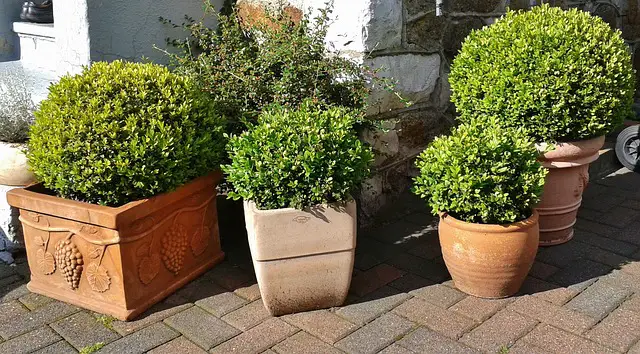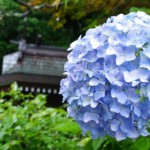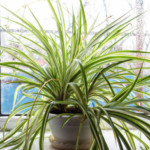In the world of gardening and landscaping, the synergy between different plant varieties plays a pivotal role in creating a visually captivating and harmonious outdoor space.
If you have the classic and evergreen boxwoods gracing your garden, the key to maximizing their aesthetic impact lies in choosing the perfect companions to plant in front of them. This comprehensive guide will walk you through a variety of plant options, offering insights into color combinations, textures, and seasonal considerations to help you design a garden that is both timeless and dynamic.
1. Flowering Shrubs: A Symphony of Colors
One of the most enchanting ways to enhance the beauty of boxwoods is by introducing flowering shrubs that not only add a burst of color but also create a dynamic visual contrast against the evergreen backdrop.
Azaleas:
Known for their vibrant hues, azaleas are a spectacular choice to plant in front of boxwoods. The wide range of colors, including pinks, purples, and whites, provides a lively and picturesque scene. Consider planting azaleas strategically to create a stunning color gradient, ensuring that each bloom complements the neighboring boxwood.
Rhododendrons:
For a broader spectrum of colors and larger blooms, rhododendrons are an excellent alternative to azaleas. These robust flowering shrubs can thrive in similar growing conditions, offering an array of choices to suit your garden’s palette.
2. Perennials: Foliage for All Seasons
For an elegant touch and a variety of foliage textures, consider integrating perennials in front of your boxwoods. These plants not only bring seasonal interest but also add depth and visual intrigue to your garden.
Hostas:
Shade-loving hostas come in various sizes and leaf patterns, making them a versatile choice for complementing boxwoods. The contrast in foliage size and texture creates a visually appealing layering effect, adding depth to your garden design.
Astilbe:
With feathery plumes of flowers in various colors, astilbe introduces a soft and graceful element to your garden. These perennials thrive in shaded areas, making them an ideal companion for boxwoods.
Heuchera (Coral Bells):
Known for their vibrant and varied foliage colors, heuchera plants add a splash of excitement to the garden. Whether it’s deep purples, bright greens, or rich reds, the colorful leaves create a striking contrast against the uniform green of boxwoods.
3. Groundcovers: Neatness and Low-Maintenance Appeal
Groundcovers offer a polished and low-maintenance look to your garden, providing a neat carpet-like cover that complements the density of boxwoods.
Liriope (Monkey Grass):
Liriope, commonly known as monkey grass, forms a neat and uniform groundcover. The arching leaves add a touch of elegance while seamlessly blending with the boxwood’s dense foliage.
Creeping Jenny:
For a more whimsical and trailing effect, consider introducing creeping jenny. The chartreuse foliage cascades gracefully, creating a visually interesting contrast with the upright structure of boxwoods.
4. Flowering Perennials: Seasonal Blooms
To ensure your garden remains vibrant throughout the seasons, incorporate flowering perennials that offer seasonal blooms and visual interest.
Daylilies:
With a wide range of colors and shapes, daylilies bring a burst of vibrancy to the garden. Plant them strategically to create focal points and draw attention to the beauty of both the boxwoods and the daylily blooms.
Salvia:
Salvia, with its spikes of colorful flowers, not only adds a pop of color but also attracts pollinators to your garden. Consider planting salvia strategically to create visual interest and promote biodiversity.
5. Ornamental Grasses: Graceful and Airy Textures
Introducing ornamental grasses can add a sense of grace and airiness to your garden, providing a captivating contrast to the denser foliage of boxwoods.
Fountain Grass:
The graceful plumes of fountain grass create a dynamic visual contrast, swaying in the breeze and adding movement to the landscape. Plant them strategically to frame the boxwoods and create a balanced and harmonious composition.
6. Annuals: Seasonal Color Palette
For an ever-changing burst of color, consider incorporating annuals that can be switched out seasonally, allowing you to experiment with different color schemes throughout the year.
Petunias, Marigolds, or Impatiens:
These classic annuals are known for their vibrant colors and versatility. Plant them in front of boxwoods in containers or borders, allowing you to refresh your garden’s color palette with each season.
Conclusion
In crafting your garden, choosing the right plants to accompany your boxwoods can make all the difference. By experimenting with colors, textures, and seasonal variations, you create a dynamic and visually pleasing landscape that evolves with the changing seasons. So, go ahead and let your creativity bloom in the garden! Happy gardening!






